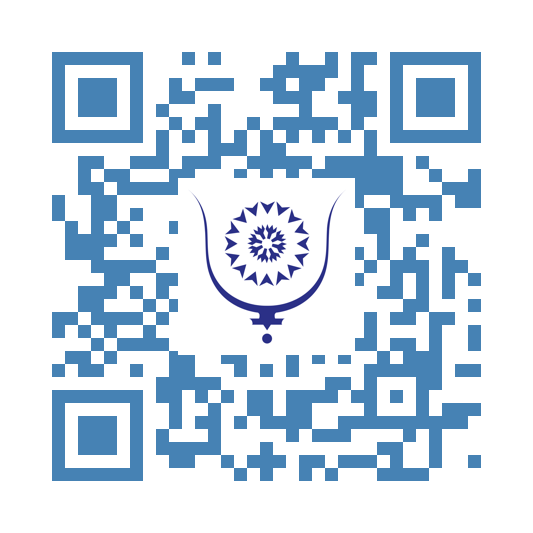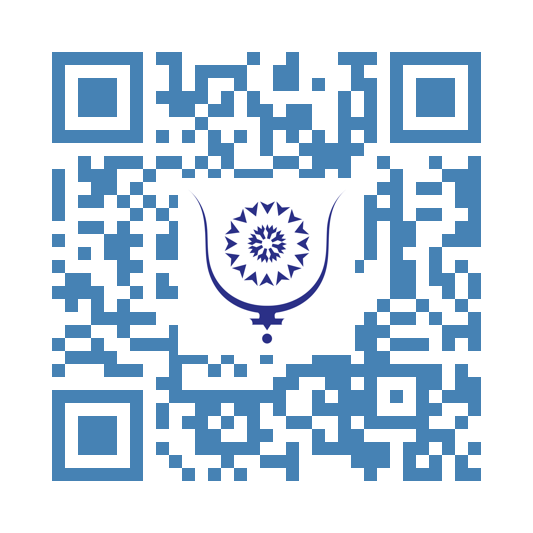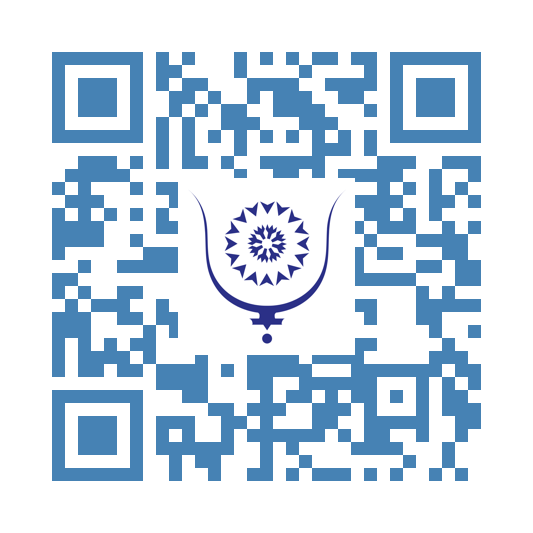Love
45
Love!
Love is a destiny We hardly choose the moment to love It happens one evening or one morning
It happens by pure chance
It leaves you confused and haggard One day when you least expect
it You didn't see
it coming from afar It happens in the blink of an eye... Without an appointment...
It makes you soft... It makes you lose your mind...
It makes you run away from home Like fire,
it burns you with passion Love at first sight is legion You'll get your share,
your ration Without logic...
But it's beautiful despite everything we endure
It's a pure feeling When it's sincere It's magical
It's fantastic Despite its pains and sorrows, its sleepless nights Until morning
It's the elixir of life It's endless ecstasy...
It happens to you by magic...
Content in loving takes you away from everything...
It besieges you from everywhere!
It takes over!
It will drive you crazy sooner or later!!!
Dr. Fouad Bouchareb El Medano / Tenerife August 24, 2025 Inspired by a text by Jalal Eddine Erroumi Arabic and Arabic All rights reserved
Share:
Love
copy:
https://bluwr.com/p/347790487
Greater Israel: A Threat to Peace and Stability...
159
The past few weeks have been marked by rather disturbing statements from certain Israeli leaders, reigniting the fundamental debate around the borders of the Hebrew state. Since its creation in 1948, following a UN decision, Israel has never officially and permanently defined its borders—a unique situation that undermines regional stability as well as the credibility of international law.
This absence of clear demarcation has severe consequences for a climate already marked by deep mistrust, both within the region and beyond. This situation is often exploited by those who do not stop calling Israel a "cancer" in the region.
Unlike the majority of states, Israel did not specify its borders in its declaration of independence. The lines recognized internationally today are those of the 1949 armistice, known as the "Green Line," but they have been constantly altered by wars and territorial expansions, notably after the Six-Day War in 1967. Since that date, Israel has occupied the West Bank, annexed East Jerusalem and the Golan Heights, while Gaza Strip, occupied and then evacuated in 2005, remains subjected to strict control. Following recent developments consequent to October 7 and Israel’s disproportionate response, the current government no longer hides its intention to proceed with a new annexation.
These recent declarations revive tensions, notably with references to "biblical borders." There is only one possible interpretation here: the outright annexation of the West Bank and a direct threat to neighboring countries.
Statements by Israeli Prime Minister Benjamin Netanyahu, Minister Smotrich, and other coalition members demonstrate a desire to maintain confusion, especially as ultranationalist voices continue to invoke the notion of "Greater Israel." This concept, based on religious texts, encompasses territories far beyond internationally recognized borders, potentially extending over the West Bank and even parts of Jordan, Lebanon, Syria, and Egypt.
This is all the more worrying as this position faces only ineffective or inaudible denunciations from Arab countries, weakened by repeated divisions and contradictions within Palestinian ranks, exhausted by the sabotage of initiatives on both sides, and aggravated by the barely disguised interventionism of Iran, which has succeeded in bribing a Palestinian faction that weakens the cause, undermining any possibility of peace. This faction, so radicalized, has become an objective ally of Israel and is labeled a terrorist group. Simultaneously, there is the complicit inaction of Western countries, who plead only half-heartedly against various abuses. Underlying this is an anachronistic construction, a 19th-century invention aimed at masking centuries of Christian antisemitism—whether Catholic, Orthodox, or Protestant: Judeo-Christianity. This striking conflation serves to oppose Western civilization to the rest of the world, notably the so-called Arab world. By this conflation, at least in appearance, a hatred that has persisted since the first Christian martyr Stephen, stoned by the Pharisees, is buried. A hatred that has never ceased.
Faced with this imbroglio, there is nothing but the chronic impotence of the UN.
The question of respect for international law and the definition of Israel’s borders should pose a major challenge to Western powers, especially the United States. Historically, the UN was at the origin of Israel’s creation with Resolution 181 of 1947, but today it proves powerless against the country’s expansion and voluntary absence of border delimitation. Resolution 242, demanding withdrawal from territories occupied in 1967, has never been implemented, just like all resolutions involving the Hebrew state. Western countries, though allies of Israel and holders of significant leverage, have so far refused to compel Israel to comply with international norms, limiting themselves to diplomatic calls for the resumption of negotiations and recognition of a Palestinian state, especially since the beginning of this summer. To this, Israeli leaders respond with categorical refusal and an intermingling of antisemitism with opposition to or criticism of a government’s politics. For the current government, there is no room for maneuver: either one accepts the Israeli diktat, even when it involves violations of international law and denial of Palestinians’ human rights, or one is antisemitic. People forget that Palestinians are Semites too...
This generates deplorable tensions with unfortunate consequences for many countries, as De Gaulle might have said.
If not stopped, these recent developments will undoubtedly increase the risk to global stability. Until now, popular dissent in the region has been controlled, even prohibited, but for how long?
The absence of recognized borders and the normalization of using religious narratives to legitimize possession of illegitimate lands constitute a direct threat to regional and global stability. To dare evoke "Greater Israel" is to legitimize expansionist aspirations, stir fear among neighbors, and fuel instability. In his recent speeches, the Israeli Foreign Minister does not hesitate to present the possibility of a Palestinian state as an existential threat to Israel. The current government does not want a Palestinian state, which remains the only foreseeable and logical solution for Israel’s very security, while maintaining ambiguity over territorial outlines can only perpetuate the conflict and block all prospects for lasting peace.
Beyond the strategic and religious considerations, it falls to the international community, particularly Western countries, to take responsibility and finally demand that Israel define its borders in accordance with international law, as is the case for every other state. Without this perspective, any political solution to the Israeli-Palestinian conflict will remain a dead letter, with the ongoing risk of global conflagration.
Israeli citizens must also take their responsibility. Continuing to vote for extremists is in no way a guarantee of security but rather a threat to the future of the children on both sides, even though a life in peace is possible. Many Israelis know this and shout it with all their might, but their calls remain unheard. It is with them that peace must be built, and they are numerous within Israel itself and across the world, particularly in the United States.
Share:
Greater Israel: A Threat to Peace and Stability...
copy:
https://bluwr.com/p/347269366
N’Djamena-Kousséri Half Marathon: A Message for the UN and Everyone Working for Peace in the World
406
Next September, more precisely on the 6th, an exceptional half marathon race will bring together the people of Kousséri, Cameroon, and N'Djamena, the capital of Chad. The athletes will start in front of the N’Djamena city hall and head towards Kousséri’s town hall, crossing the border between the two countries without any customs checkpoint or stop. On the contrary, authorities from both countries are collaborating to ensure that runners are supervised and secured on both sides under the best possible conditions. This will already be the third edition of this unprecedented race.
This sporting event, largely sponsored by the African Athletics Confederation, goes beyond simple competition: it embodies a powerful symbol of rapprochement and reunification of the peoples of Central Africa, highlighting the deep human dimension of such an initiative. Indeed, the populations on both sides of the border share so much in common that this administrative boundary, a colonial legacy, cannot separate them.
The strength of sport as a vector of unity is a slogan and a value we repeat on every occasion. But how many sporting events can truly embody it on the same scale as this unique race in the world?
Sport, by its universal nature, has the rare power to transcend cultural, political, and social barriers. But here, this is the only sporting event where it transcends borders.
In the border region between Cameroon and Chad, it is actually one and the same people who live here. Circumstances have made them two populations belonging to two different countries. On both sides of the border, people share history, traditions, and common challenges. In this context, which is not unique to this central African region, this half marathon represents far more than a simple endurance challenge. It is a bridge between communities often separated by artificial borders inherited from the colonial past.
Running together, across spaces that connect these two neighboring cities, symbolizes the will to overcome historical divisions. Every step is an invitation to solidarity, mutual understanding, and the celebration of shared values such as respect, brotherhood, and peace.
Kousséri and N'Djamena, though geographically close, have often been distanced by political tensions or administrative differences. But on the ground, in the heart of this race, the differences fade away. Runners, whether amateurs or professionals, from here or abroad since the race is international, share the same goal: moving forward together.
This sporting initiative also allows the meeting of communities, families, youth, local leaders, and institutional actors from both countries. It encourages cultural, economic, and social exchanges, paving the way for more sustainable partnerships and regional stability.
Here is a genuine message of hope for peace and reconciliation that the UN should hold up as an example, especially in the face of those who waste fortunes on endless conflicts. Examples are abundant...
The Kousséri-N'Djamena half marathon sends a clear and inspiring message: despite borders and differences, it is possible to build human bridges, consolidate lasting peace based on mutual understanding and cooperation.
In a world where ethnic and political conflicts often divide peoples, these moments of sporting gathering illustrate the power of dialogue and reconciliation. They express deep humanism, where each step taken on the ground is a step toward fraternization, toward rapprochement, toward a shared future.
Beyond athletic performance, the half marathon between Kousséri and N'Djamena on September 6th is a true celebration of human unity. By bringing together peoples with close origins yet sometimes divided, it invites reflection on our ability to overcome the borders that separate us to prioritize what should unite us: brotherhood, peace, and hope for a better world.
**The Human Dimension of Rapprochement and Reunification of Peoples finds a true embodiment in the N’Djamena-Kousséri Half Marathon, Bridge of Hope.**
For those who understand, greetings.
Share:
N’Djamena-Kousséri Half Marathon: A Message for the UN and Everyone Working for Peace in the World
copy:
https://bluwr.com/p/343913187
Ley Lines: The Invisible Currents of Earth’s Sacred Geometry
537
The concept of ley lines suggest the existence of invisible pathways of energy that crisscross the Earth, forming a network of subtle energy, ancient alignment, and spiritual resonance. Though the term “ley line” was first coined in 1921 by the English antiquarian Alfred Watkins (1855-1935)—who noticed that many ancient sites in the British landscape aligned along straight tracks—the concept is even older, echoing geomantic traditions across cultures that recognized the Earth as a living, breathing being with its own circulatory system of sacred force.
Basically, ley lines are believed to be channels of Earth's energy—similar to meridians in Traditional Chinese Medicine (TCM)—which connect sites of spiritual, astronomical, and historical significance. These may include standing stones, megalithic temples, pyramids, cathedrals, burial mounds, and crossroads. In the East, these currents are known as dragon lines or "lung mei" in Chinese geomancy (feng shui), while in South America, the Inca referred to similar energetic pathways as "ceques", radiating outward from the Coricancha Temple in Cusco.
From an esoteric standpoint, ley lines are neither arbitrary nor merely symbolic. They are understood to follow the electromagnetic shape of the planet—interacting with telluric currents, magnetic anomalies, and planetary grid systems. At certain points where multiple ley lines intersect, energy becomes concentrated, forming what are known as power nodes or vortex points. These nodes are believed to amplify consciousness, enhance ritual, facilitate spiritual contact, and sometimes thin the veil between the seen and unseen worlds. Places such as Stonehenge, the Giza Plateau, Machu Picchu, Glastonbury Tor, and Mount Shasta are frequently cited as residing on these potent intersections.
Mystically, ley lines represent more than geological curiosity—they are conduits of planetary consciousness, arteries of Gaia herself. In Hermetic and occult traditions, the Earth is viewed as a macrocosmic body, complete with chakras, nadis, and energetic organs. Just as the human body channels prana through subtle pathways, so too does the Earth transmit vital energy through her leys. To walk these lines consciously, or to work magically upon them, is to participate in the planet’s own alchemical process—aligning human intention with terrestrial intelligence.
In this context, the concept of ley lines resonates with the Gaia Theory, proposed by James Lovelock (1919–2022) and Lynn Margulis (1938–2011). This theory pictures Earth as a self-regulating, living system in which the biosphere, atmosphere, geosphere, and hydrosphere are deeply interconnected. Just as Gaia Theory suggests that the planet maintains balance through feedback loops, ley lines can be seen as subtle energetic channels through which this regulation occurs. From an esoteric perspective, these currents mirror Gaia’s own physiological processes—arteries circulating life-force and sustaining the interdependence of all beings within the planetary organism.
Many practitioners of geomancy, dowsing, and ritual magick believe that ley lines can be activated or aligned through offerings, ceremonies, sound, and sacred architecture. Temples and churches built upon these lines often reflect celestial alignments, forming a harmony between heaven and earth. Some traditions hold that ancient initiates placed monuments at ley crossings not merely as markers, but as resonant structures designed to stabilize or modulate the flow of planetary energy.
There is also a mythical and cosmological layer to ley line theory. In Arthurian legends, Glastonbury is not only a place on a map but a threshold to Avalon—an invisible world accessible through altered states or alignment with the land’s living current. In this way, ley lines serve as the nervous system of a planetary intelligence, a kind of spiritual cartography through which initiates navigate both terrestrial and cosmic realities.
Though scientific consensus does not validate ley lines as measurable phenomena, their enduring presence in sacred geography, myth, and ritual suggests they function on a level beyond conventional empiricism. They invite the sensitive and the intuitive to perceive the Earth not as inert matter, but as a divine organism—alive, aware, and in communion with those who learn to walk her lines in reverence.
Share:
Ley Lines: The Invisible Currents of Earth’s Sacred Geometry
copy:
https://bluwr.com/p/341332064






